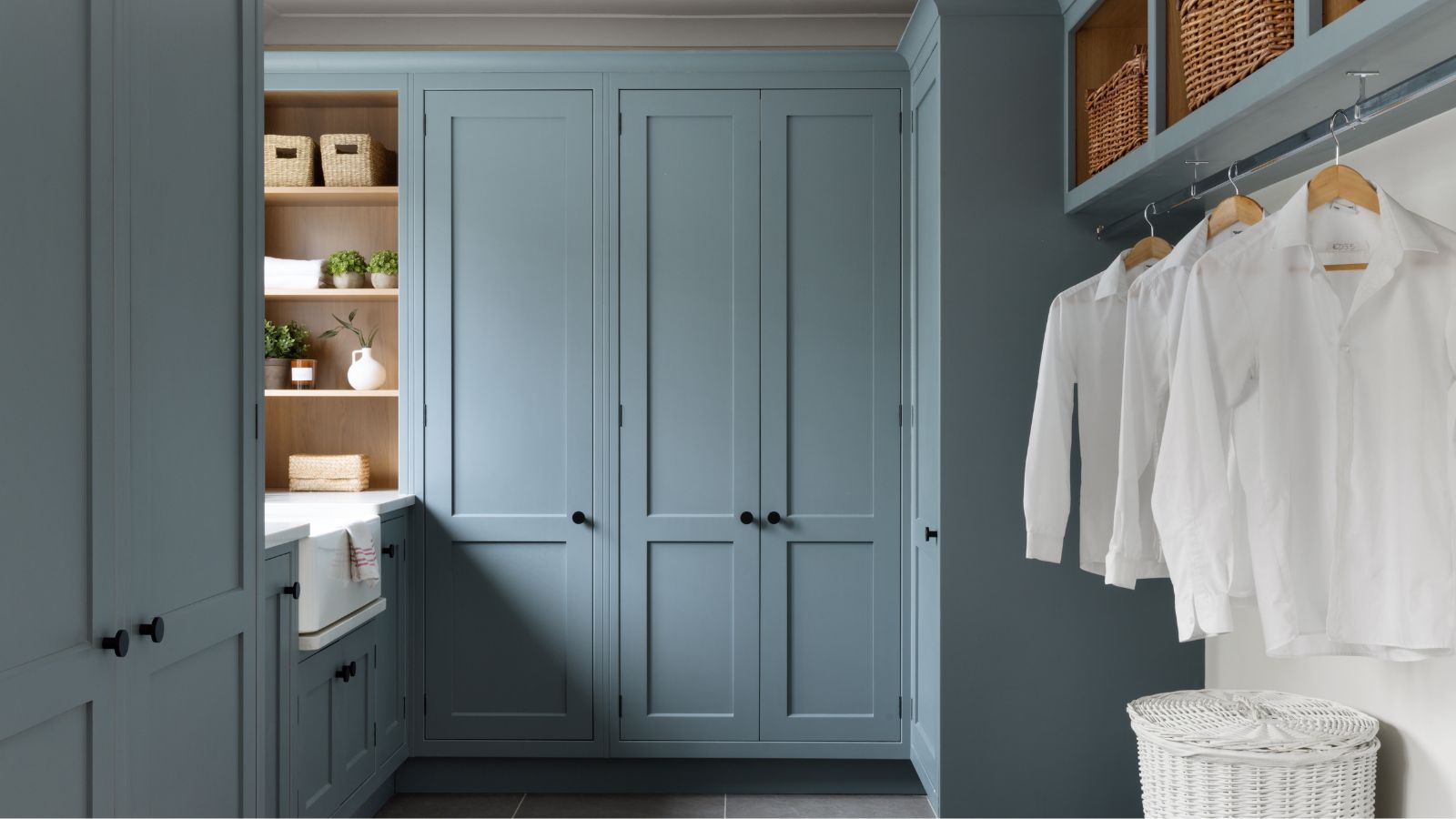Is it a bad idea to dry your clothes indoors? We weigh up the pros and cons
Are your clothes starting to smell musty or damp? It might be time to stop drying clothes indoors, warn experts


Drying clothes indoors is a common practice, especially in regions where air-drying laundry outside isn't feasible due to weather. However, it raises concerns about indoor air quality, energy use, and potential health risks.
Indoor drying puts your clothes and nearby items, such as books or furnishings, at risk. It's important not to underestimate the amount of moisture your drying clothes are actually releasing into the air, especially in small spaces!
Let's weigh the pros and cons to decide if drying clothes indoors is advisable.
The cons of drying clothes indoors

One major concern and risks when it comes to drying clothes indoors is the potential for moisture build-up. When drying clothes in a small space or a poorly ventilated room, the humidity levels can increase. This can create a breeding ground for mold and mildew, which not only damages walls and ceilings but can also lead to health issues for people sensitive to mold due to the bad air quality inside your home. This is especially true when drying clothes indoors in winter. It's important to have good airflow and ventilation to mitigate these risks when drying clothes indoors.
According to professional organizer Shannon Krause, Co-Founder of Tidy Nest, another drawback of indoor drying is potential odors. Indoor-dried clothes may not dry as fast or well as those set outdoors; if these clothes are not properly ventilated or the room itself has no air circulation, they can take up some pretty musty smells. This can be bothersome and may require additional steps like using air fresheners or ensuring proper airflow to prevent lingering odors.
Using an electric dryer indoors can also impact energy consumption. While drying clothes indoors may seem like a way to save on electricity costs (the question of how much it costs to run a tumble dryer is increasingly important), using an electric dryer without proper ventilation can actually increase energy usage. This is because the heat and moisture generated by the dryer can affect indoor temperature and humidity levels, leading to higher utility bills in some cases.
The pros of drying clothes indoors

However, drying clothes indoors has its benefits, too. When done properly, it can save energy and time, especially in colder climates where outdoor drying may not be practical during certain seasons. Air-drying clothes indoors is also gentler on fabrics compared to the heat of a dryer, especially on delicate items that might shrink or wear out faster in a dryer. This can help extend the lifespan of clothing, particularly delicate items that might shrink or wear out faster in a dryer.
Design expertise in your inbox – from inspiring decorating ideas and beautiful celebrity homes to practical gardening advice and shopping round-ups.
It can also help increase humidity in a home if the air is dry in winter.
Alternative ways of drying clothes
To minimize the risks associated with indoor drying, Eliana Coca, Founder of E.C. House Cleaning, has provided some alternative methods and precautions to consider:
Outdoor drying
If the climate is permissive enough, then this method generally turns out to be the most energy-efficient and most environmentally friendly. It allows the clothes to dry naturally by the action of sunlight and wind that, at the same time, may sanitize the clothes and reduce the need for unnecessary heating or cooling indoors.
Shared dryers or laundromat
If outdoor line drying is not feasible, then utilize commercial dryers run either by a laundromat or shared laundry arrangements. These are used frequently for bulk drying and generally vented for excess moisture.
Dedicated laundry rooms
Most houses having laundry rooms have installed good ventilatory systems that can efficiently handle the moisture expelled during indoor clothes drying. If available, these facilities can reduce some of the problems identified with indoor drying.
Open the windows
When drying clothes indoors, it’s good practice to open the windows and circulate the space. Opening the windows allows fresh air to circulate the room and wet clothing and helps the moisture to escape.
If you like to use an electric dryer indoors, ensure it is vented correctly to the outside to prevent moisture buildup and potential damage to indoor air quality. Investing in the best dehumidifiers, such as the NineSky Dehumidifier from Amazon or opening windows during drying can also help maintain a healthier indoor environment by reducing humidity levels.

Seraphina is a contributing editor at Homes & Gardens, writing Solved features on organizing and storage. She loves to decorate and also grow her own produce from her home in London. Her previous experience includes working at Women's Health and Fabulous Magazine.
